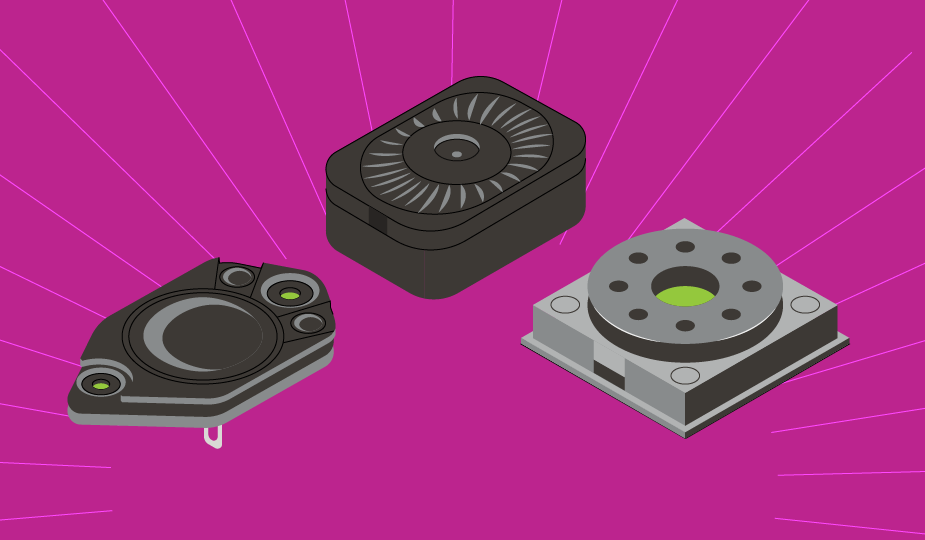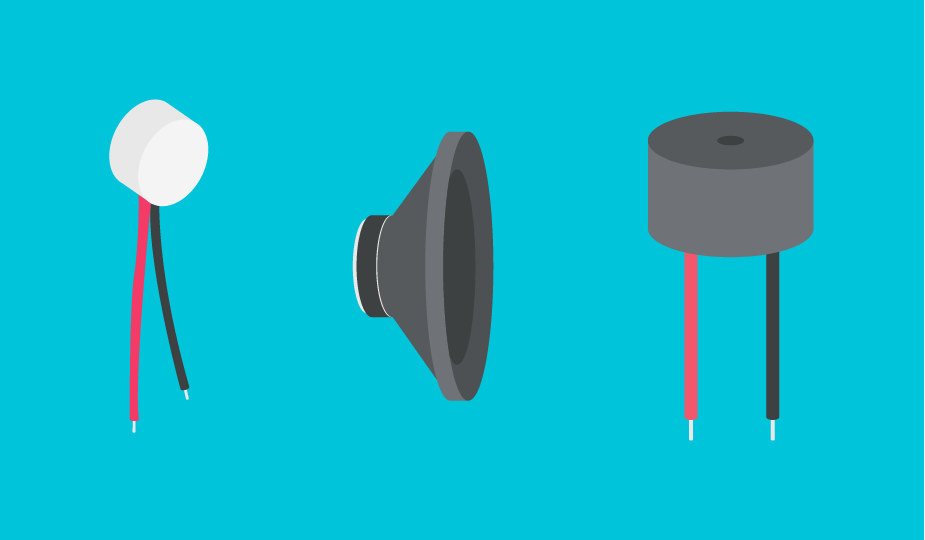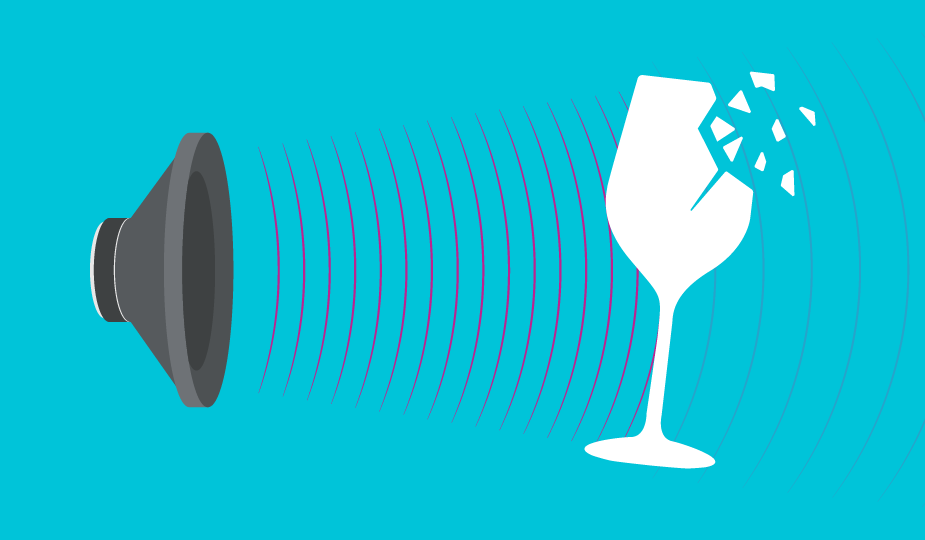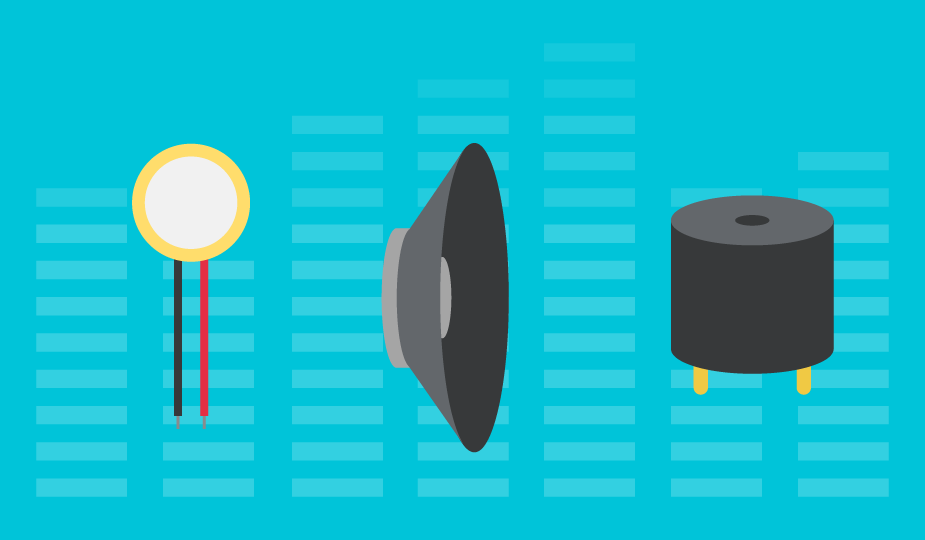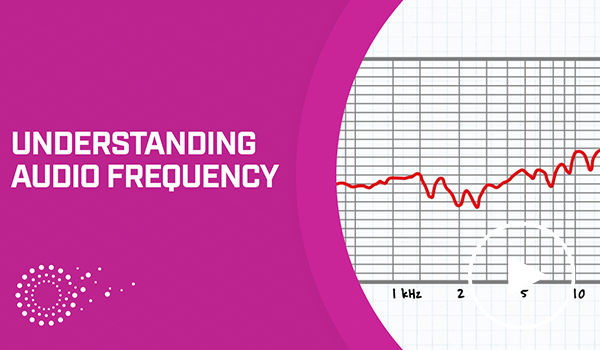The Basics of Sound Pressure Level and Decibels

In the realm of sound measurement, the decibel (dB) stands as a fundamental unit, offering a compact yet powerful means of quantifying sound intensity. With its logarithmic nature, the decibel provides a concise scale that spans a vast range of values, making it indispensable in various fields. In this post, we delve into the concept of decibels and their application, illuminating their significance in understanding sound pressure levels (SPL) and real-world audio scenarios. Shop CUI Devices’ full range of audio components.
Decibels and A-Weighted Decibels
A decibel (abbreviated as dB) is the scaled logarithm of the ratio of a measured value with respect to a reference value. This means that a decibel is not a unit, but rather a ratio. Decibels are useful because they can show a huge range of values in a small space. For instance, a sound pressure scale going from 0 to 120 dB can represent sound pressures from 20 µPa (micro-pascals) to 20,000,000,000,000 µPa. This roughly represents the lowest SPL a human can hear all the way up to uncomfortably loud sounds. The generally accepted value for "Pref" in the formula shown here is 20 µPa.
Lp = 10log10 (Prms / Pref) = 20log10 (Vrms / Vref)
Because decibel values increase exponentially, instead of linearly, when expressed in “normal” numbers, 20 dB is ten times the power of 10 dB, and 100 times the power of 0dB.
When it comes to understanding audio in real-life scenarios, the 20 Hz to 20 kHz audio frequency range tends to be the general range for human ears. However, this range is reduced with age, especially in males, which tend to have an upper audible range around 13 kHz. The human ear also does not have a flat frequency response over this audible range with certain frequencies being attenuated and others magnified. A-weighting attempts to compensate for this by discounting frequencies which the human ear is less sensitive to and placing priority on sounds between 1 kHz and 7 kHz. As a result, some speakers specify SPL using the A-weight system (i.e. dBA).
Sound Pressure Level Examples
The table below provides examples of different sound pressure levels for added context when selecting an appropriate SPL for your design. A “good” SPL is truly dependent upon the intended use and application environment.
| Sound Example | Sound in Pa | Sound in dB |
|---|---|---|
| Jet engine at 30 m | 632 Pa | 150dB |
| Threshold of pain | 63,2 Pa | 130dB |
| Hearing damage (possible) | 20 Pa | Approx. 120 dB |
| Loud concert hall | 6.32 Pa | 110dB |
| Jack hammer at 1 m | 2 Pa | Approx. 100 dB |
| Traffic on a busy roadway at 10 m | 2x10-1 ~ 6.32x10-1 Pa | 80 ~ 90 dB |
| Passenger car at 10 m | 2x10-2 ~ 2x10-1 Pa | 60 ~ 80 dB |
| Normal conversation at 1 m | 2x10-3 ~ 2x10-2 Pa | 40 ~ 60 dB |
| Very calm room | 2x10-4 ~ 6.32x10-4 Pa | 20 ~ 30 dB |
| Auditory threshold at 1 kHz | 2x10-5 Pa (RMS) | 0dB |
CUI Devices has also developed a SPL calculator to allow users to convert a speaker's specified SPL on the datasheet to different real-world conditions, or to compare SPLs between two devices with different specified parameters. This tool makes it quick and easy for designers to specify the proper speaker for their application.
結論
Decibels emerge as indispensable tools for assessing and quantifying sound levels across diverse contexts, offering a nuanced understanding of auditory environments. By incorporating A-weighting to address human auditory sensitivity, decibels provide a refined framework for evaluating sound perception and designing effective sound systems. In essence, a mastery of decibels empowers individuals to navigate the auditory landscape with precision and insight, ensuring optimal outcomes in audio engineering.


